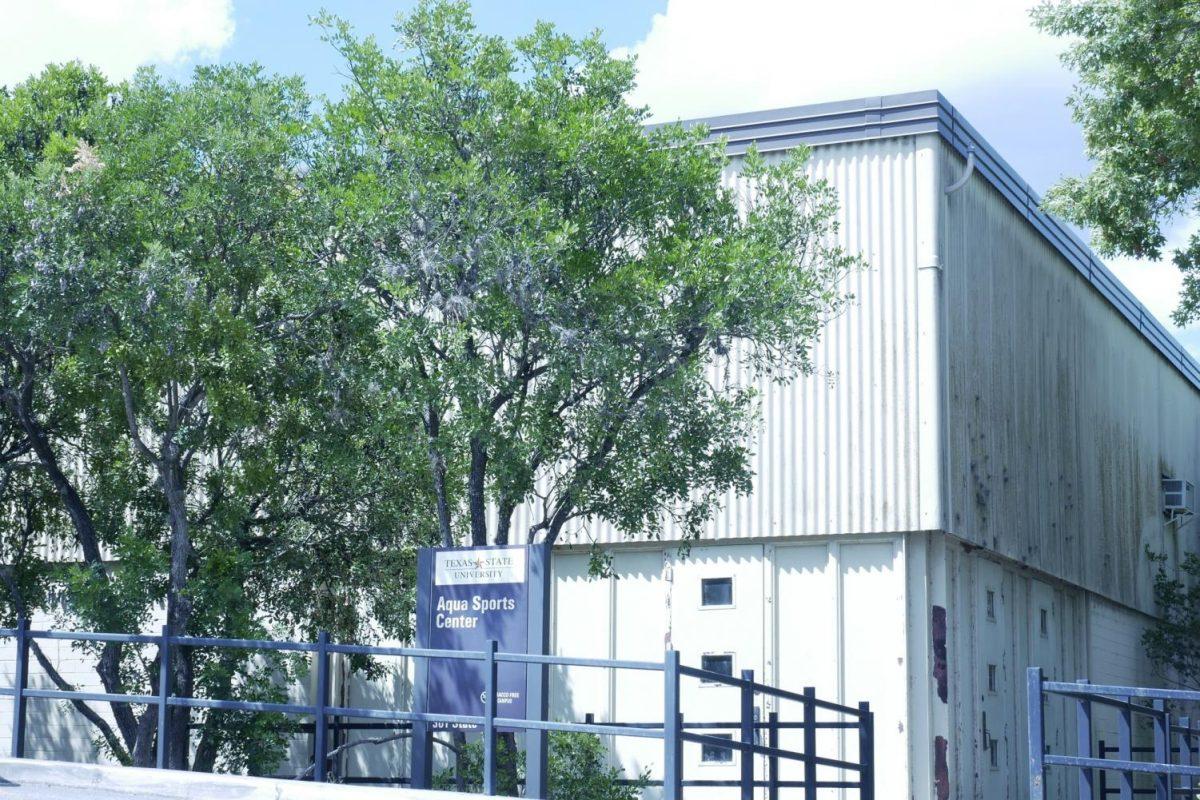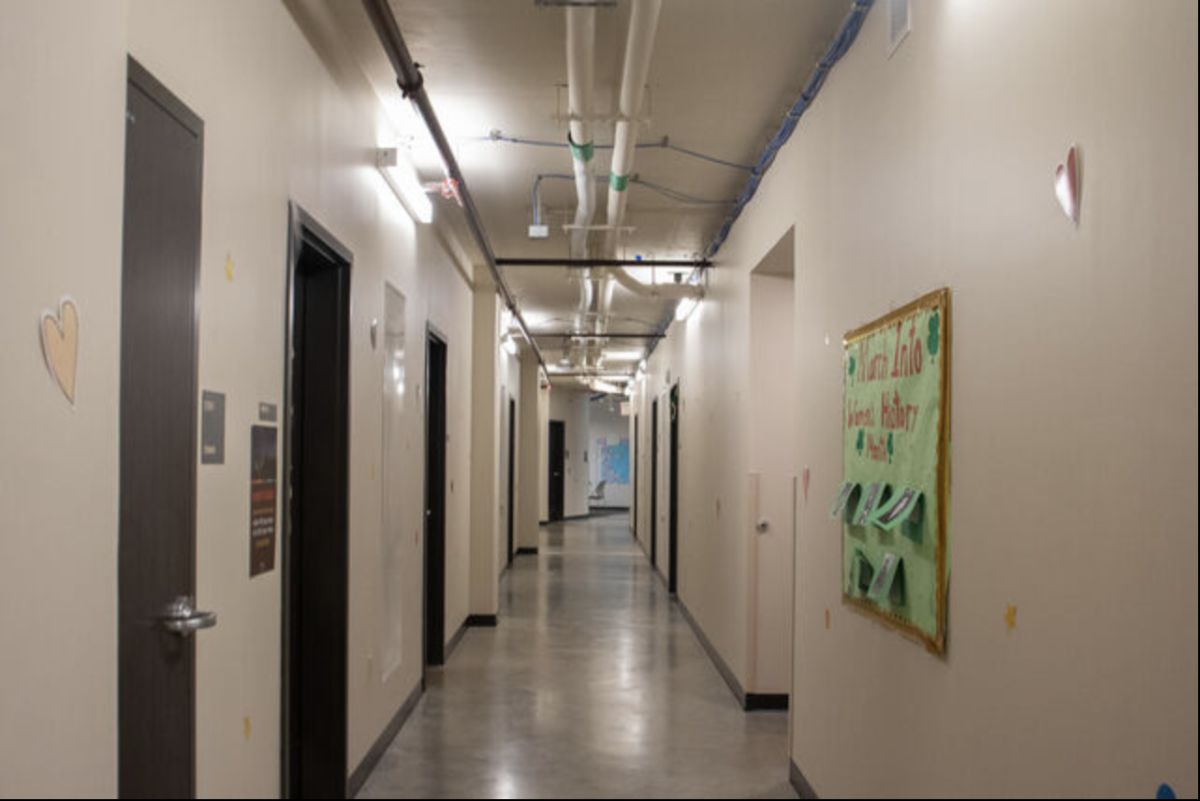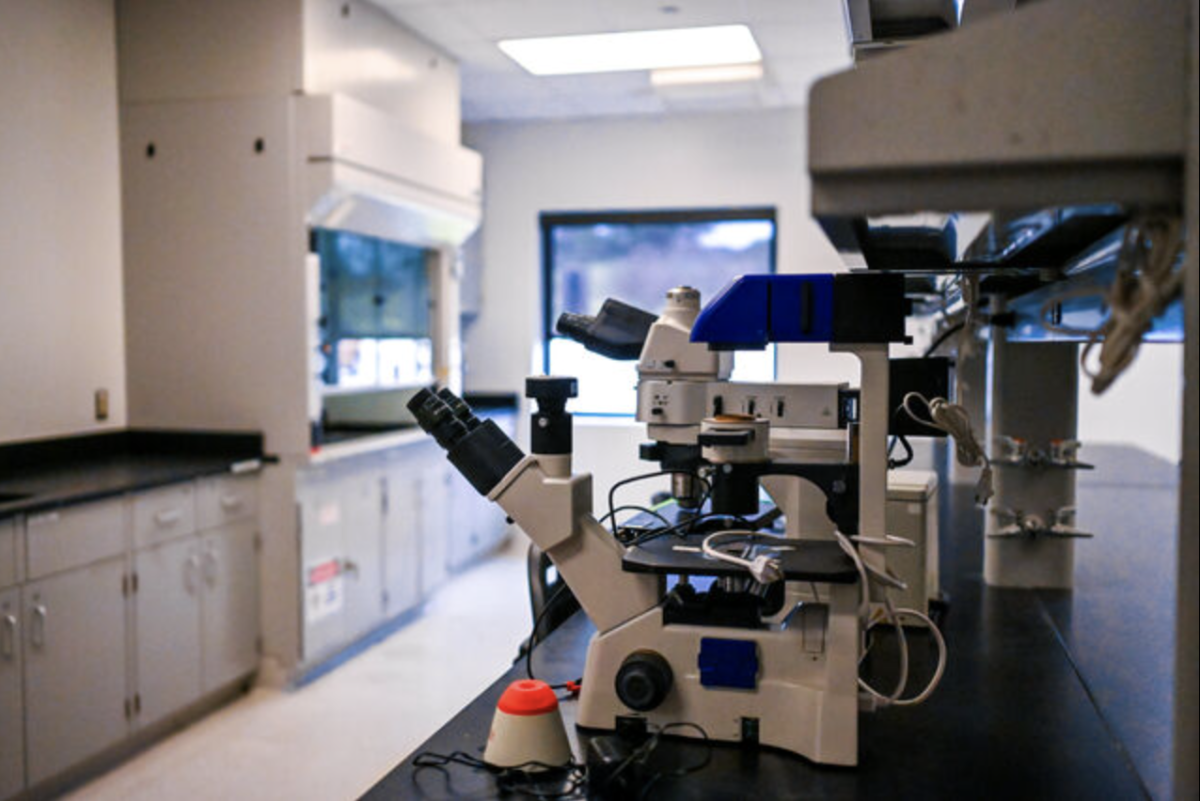Film students are gaining the opportunity to home their skills with a new facility.
The Texas State University System Board of Regents approved the approximately 26,000-square foot facility Aug. 23 to be outfitted with amenities needed to produce film, including a soundstage with a green screen, computer lab, recording/sound mix studio with an isolation booth and screening room. The project is estimated to cost $10 million.
The new space will support the university’s growing film production catalog, as well as new curriculum to better prepare students for a career in filmmaking.
The ASC, located at 301 State St. and adjacent to the Hines Academic Center, consists of two floors: the first floor contains a swimming pool, locker room and showers, and the second houses the Texas State Gymnastics Club weekly practices and equipment.
Additionally, the facility accommodated several Health and Human Performance classes until the courses were relocated to the Student Recreation Center last May.
Associate Vice President for Finance and Support Services Planning Nancy Nusbaum participated in planning the proposal and renovation plans for the project. She said reforming the space is driven by the growing needs of the theatre and dance department.
“(The project) is going to be putting some under-utilized space to really good use,” Nusbaum said. “Their retention rate is really high, about 83-86%, which can cause issues with getting into these limited film courses to graduate. The additional space should help alleviate that.”
Debbie Alley, chair for the department of theatre and dance, has seen the growth first-hand and attributes it to the steady rise of new mediums for media consumption.
“With the profusion of Netflix, Amazon, Hulu and now the Disney Channel, I think we now see a lot of performance art and a lot of people expressing themselves through storytelling,” Alley said. “There are a lot of marketable skills and a lot of jobs in this profession right now. People see this as a viable way to make a living.”
Alley attributed the success and growth of the department to Texas State’s unique location between two major cities and her distinguished faculty.
“There is a lot of great filmmakers in Austin and San Antonio, so we get to take advantage of that by swooping up faculty members who can teach one or two classes for us,” Alley. “Some of them are award-winning filmmakers and have been in the field 15-20 or 25-30 years—both bring a lot of experience to the table. I think all of these things help when you start to build a program and people see that faculty have—and are—working professionally in the field and students coming out of the program and working professionally as well.”
Assistant Professor of Film Johnny McAllister, who is credited as the second unit director and writer for his most recent drama “Bull,” was selected to be the Film Area Head in 2017. In the planning stages for the facility, McAllister reached out to past institutions where he had studied film and gained experience in the industry to plan for what was needed.
“I reached out to my network in New York, at Columbia University and the University of Texas at Austin—who just built a new media center and studio—it was just a matter of making sure this building can represent the program,” McAllister said. “I was the head projectionist at Columbia, so I had some experience with facilities of this sort of ambition and some of the pitfalls that you could run into.”
With the recent approval of the project, McAllister has begun working on a new curriculum to offer to students who choose a film concentration upon the completion of the facility. In the process, he hopes to help his students become well-rounded filmmakers and have opportunities to specialize in their respective concentrations.
“I’m spending this week working on new course proposals and I have upwards of 20 I hope to submit this week,” McAllister said. “I keep coming back to this notion of a complete filmmaker—someone who understands, on a deep level, all of the things that go into the making of a film. I want (students) to be able to call themselves cinematographers and be able to call themselves editors. I think they need to be familiar with all of the various technologies that go into making a film. At the same time, they will have options to specialize in something if they love it and are good at it. They’ll have an opportunity to go ‘I am going to take a few more focused classes on cinematography, because I think that’s going be my real pursuit, professionally.’”
McAllister has already yielded such results in his students.
Ray Pettigrew, business and film junior and student of McAllister, was one of the students who shifted direction after taking a class he had interest in, finding his professional pursuit.
“Originally I came here to be an actor,” Pettigrew said. “Then, I joined a business in film class because I thought it sounded interesting and absolutely fell in love. I went from being in front of the camera, on stage, to being behind it. Now I have my sights set on getting my masters in cinematography at New York University.”
Film senior James Brinkley vocalized his excitement for the project, even though he will have graduated by the time the facility is complete.
“Most of us students are very happy with the growth of the program and we want to see it grow to possibly as big as the theatre program here to have its own building, community and a wonderful staff of professors,” Brinkley said. “For the time being, we’re happy as it is to see the arts funded in this way.”
Brinkley and Pettigrew have been using the skills accrued during their film courses to create—with other theatre students—a web series called “Tales of Phantasmagoria.”
Debbie Alley hopes the program and completed facilities will better equip students with the skills they need to be successful in the ever-growing film industry.
“One of the things making us distinct as a program is we are training the students to go out and get the ground-level jobs that then take them off to other areas,” Alley said. “I hope to have students working in lighting and audio, editing and cinematography—all of those jobs you see scroll past at the end of a movie or television show.”
Planning for the renovation is still in progress. A timeline detailing when the project will be complete is not yet available to the public.















